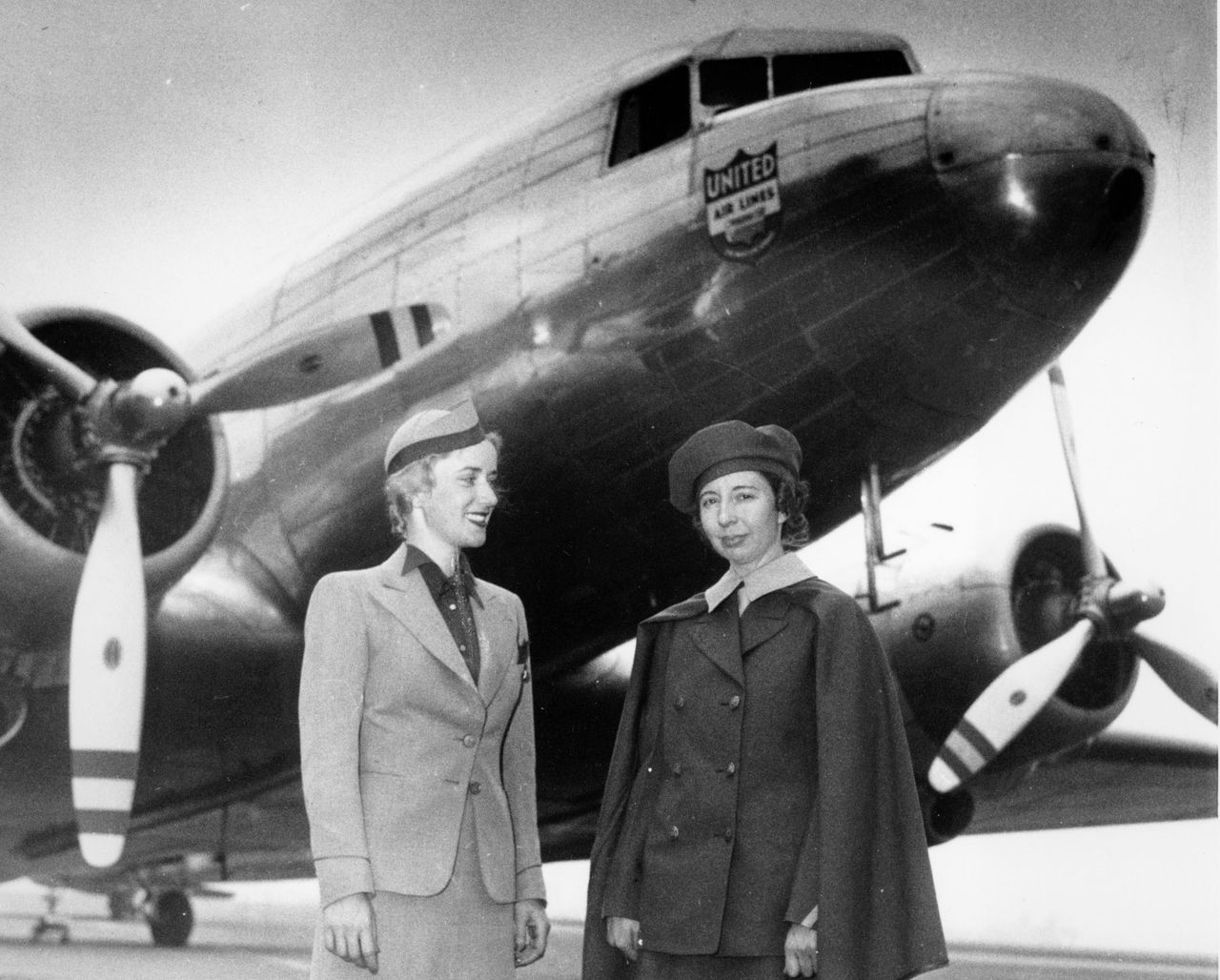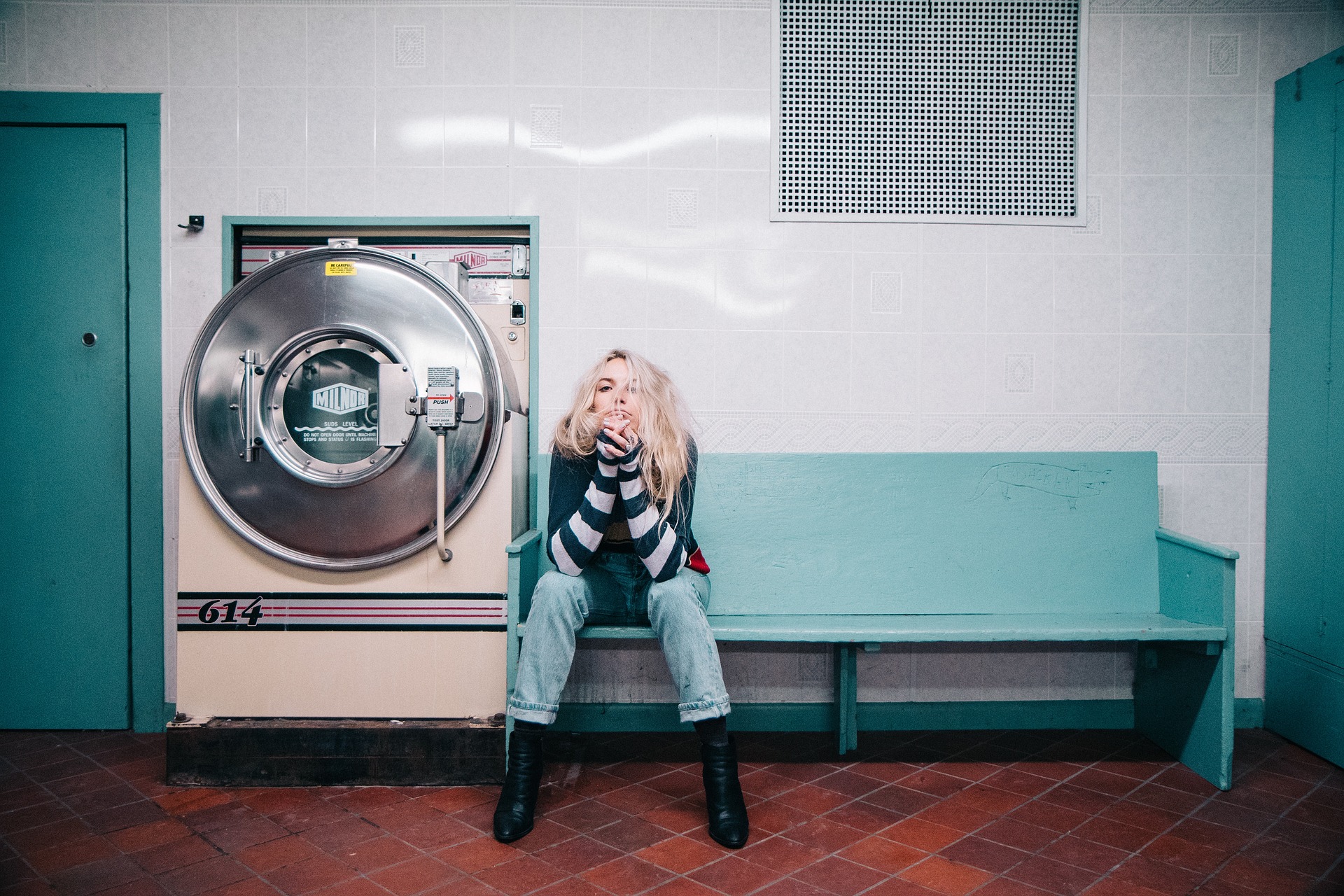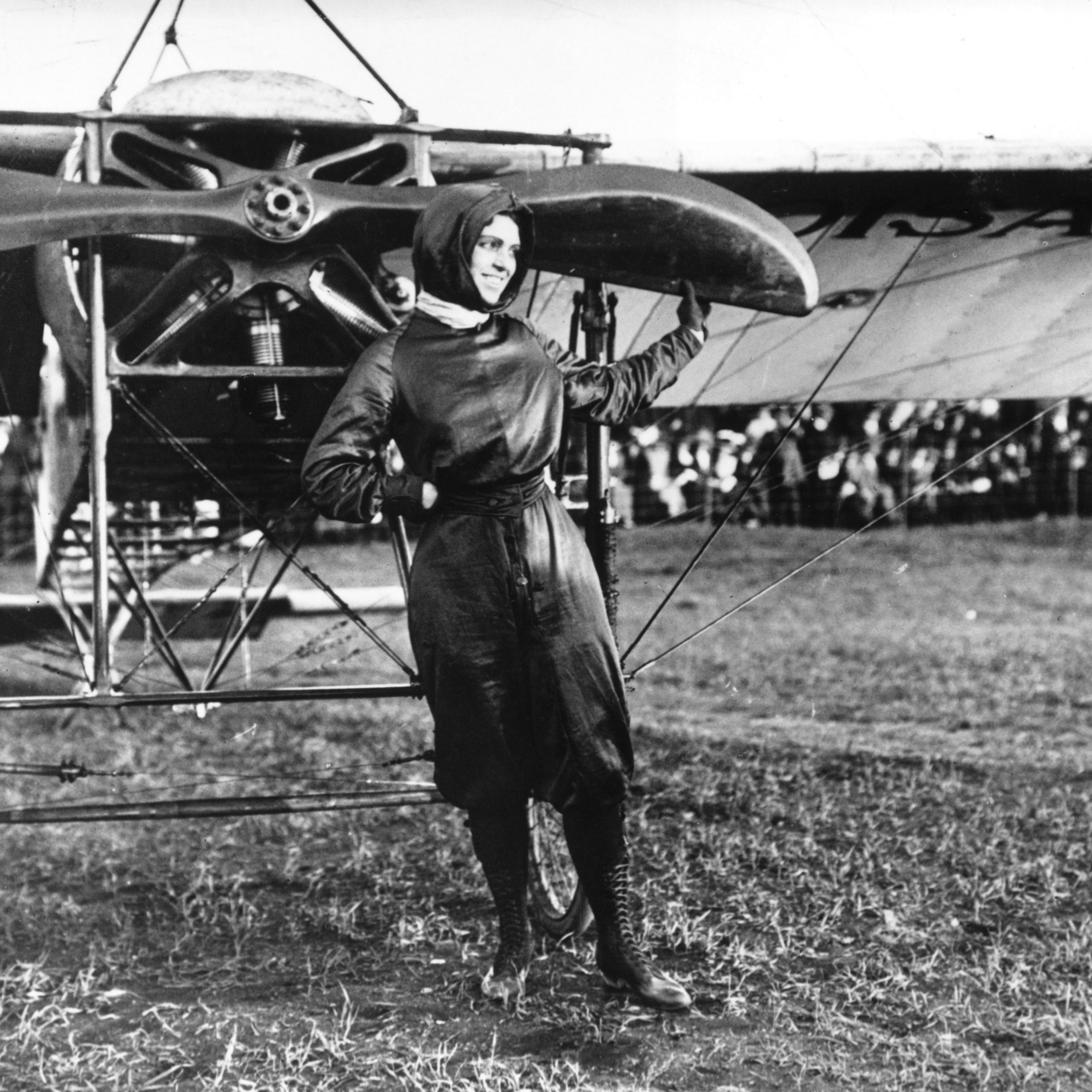
4 Badass Women who made Aviation Herstory
We’re back with another addition of history-making women! This time we are looking at lady pilots—but don’t call them Missy!
I had so much fun learning about the incredible flight attendants who made history for last week’s post that I knew I wanted to do a follow up with women aviators. Female pilots that broke down barriers and lived seriously impressive lives. It was SooOoO hard to choose just four women to highlight. Throughout history and even today, aviation is so male-dominated that nearly every woman along the way feels a bit iconic. There are a lot of firsts and they are all important bricks in our wall of history.
You may notice some famous names missing from this list. I’m not throwing any shade their way, these four are just the women I chose to highlight for this piece. Most of them I had never heard of, and I am SO glad that’s changed. While the thought of being a commercial pilot never sounded appealing to me, after reading up on these incredible women in aviation I definitely did some awe-induced fantasizing about joining the ranks. Some “I want to BE her” moments.
Maybe you will, too! Without further ado, here they are:
4 History-Making Women in Aviation

Meet Marie Marvingt, my new personal hero and girl crush.
1. Marie Marvingt
Marie Marvingt is so accomplished in so many arenas that it makes my head spin.
Before she was working toward making this list of important women in aviation, she was an award-winning athlete. Oh, which sport you ask? ALL of them. Swimming, skiing, shooting, bobsledding, to name a few. She was the first woman to receive the Palms du Premier Tireur (First gunner palms) award by a French Minister of War after winning a military shooting competition. She also cycled the Tour de France on the down-low after being denied entry in the race—can we guess why? While Marvingt finished the course (with no official recognition), only 36 of the 114 men on the roster did! This badass woman was also a skilled mountaineer and became the first woman to climb most of the peaks of the French and Swiss Alps. Just, wow. I have to get off the sports and into the history-making in aviation, but there is way more accomplishment than what I’ve just mentioned.
Marie Marvingt was the first French woman to earn her balloon pilot’s license, then became the third woman ever to earn a fixed wing pilot license. She set the world’s first aviation record for women in 1910 for time and distance flown. This is super important because before this, there was NO record-keeping done for women at all. Not only was her record a personal “win” for Marvingt, but it began the tradition of documentation so other incredible women throughout history could have their accomplishments recorded and remembered.
In World War I, Marvingt disguised herself as a man and fought on the front lines. Okay, Mulan, we see you. She was discovered and given the boot, but that did not stop her drive to help in the war effort. She covered the war as a journalist and also served as a surgical nurse with the Red Cross. In 1915 she became the first woman in the world to fly in combat and was later awarded for her bombing of a German base. I am not here to celebrate bombing by any means. But I am here to recognize women being able to do anything that men can do—and, as Marie Marvingt’s example shows, do it exceptionally well.
Marvingt became convinced of the need for medical aviation. She began petitioning the French government to develop “air ambulances” in 1910, and this passion was a defining thread throughout her remarkable life and career. She drew up prototypes, raised funds, and spread the gospel of the need for this innovation. She spoke at thousands of conferences around the world and was co-founder of the French organization Les Amies De L’Aviation Sanitaire (Friends of Medical Aviation). In 1931, she created a competition in which a prize would be awarded to the best prototype for civil aircraft that could be turned into an air ambulance. In 1935 she created a civil air ambulance service in Morocco and was awarded the Medal of Peace in Morocco. She developed the training courses for Air Nurses, and became the first certified flight nurse in the world.
Are we impressed yet!?
The lasting impact Marie Marvingt has had is patent. When we see a medical helicopter flying by we might hope to ourselves that the passengers will be okay. What we probably don’t think of is how it came to be that medicine and aviation are so tightly intertwined. It seems obvious that the two should work together. But up until one extraordinary woman came along, things weren’t so clear.
Marie Marvingt makes our list of important women in aviation (and my new personal hero) for seeing the potential for flight to be not just fun, as in air shows, and not just destructive, as in combat planes. She saw that aviation could be more than that, could serve society. And once she saw it, she spent her time, energy and passion seeing that vision through to fruition.
Want to read about famous flight attendants in history? Check out last week’s post: 4 Flight Attendants who Flew Through the Glass Ceiling
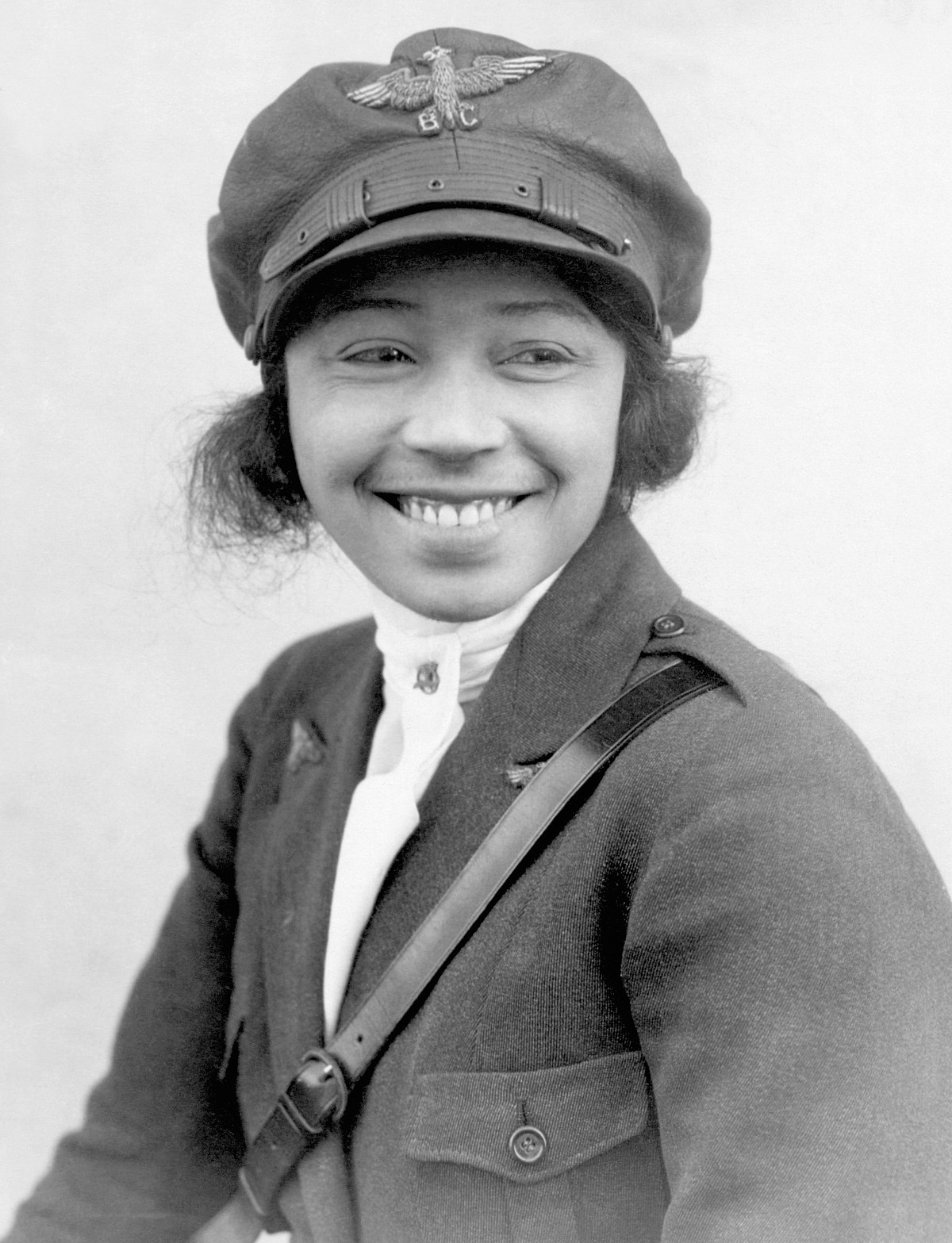
Don't tell Bessie Coleman she can't!
2. Bessie Coleman
Bessie Coleman was the first African American and first Native American woman to become a pilot. The daughter of a sharecropper and a maid, Coleman and her 12 siblings grew up knowing the meaning of hard work. Coleman saved up enough money to attend the Colored Agricultural and Normal University (now called Langston University) in Langston, Oklahoma, where she attended for 1 year before dropping out due to the cost.
In 1915, Coleman moved from Texas to Chicago to attend a beauty school and became a manicurist. A winding path to aviation, indeed!
Far from a lifelong plan, Coleman’s interest in flying was in fact sparked by her brothers. Having been away, serving in World War I, they saw French women becoming pilots. One brother reportedly teased what a shame it was that she would never get to learn to fly like the women in France. And with that “No you can’t”, Bessie Coleman’s dream of flight was born, and with it the drive to achieve.
After being denied by every flight school in the U.S., Coleman, under the guidance of Chicago Defender publisher Robert Abbott, decided she would have to learn in France. The next barrier to overcome was one of language, as the flight school’s application had to be completed in French. Coleman began taking night classes to learn Français and eventually was accepted into the École d’Aviation des Frères Caudron. In 1921, Bessie Colemand was the first African American and native American woman to have earned her pilot’s license.
Coleman became famous for performing stunts like loop-de-loops and figure 8s in the air. She also became famous for standing up for her beliefs, refusing to perform in places that were segregated. She used her skills to hold the proverbial door open, teaching other black future aviators to fly. She saved up enough money through performing in air shows to purchase her own plane—a Jenny – JN-4.
Coleman died tragically in an accident in 1926 but made history before she went. Her legendary story remains one of the most important in the history of women—and representation—in aviation.

Bee Haydu would not rest until women servicemembers got the status they deserved.
3. Bernice “Bee” Haydu
Next up on our list of important women in aviation history is Bernice “Bee” Haydu, who secured veterans benefits for women who’d served in the Air Force.
Let’s take it back. Bee Haydu—Bee Falk then—started taking flight lessons on the weekends because of her brother, who was in the Air Force. (Similar to Coleman’s flight origin story!) In 1944, she attended Women Airforce Service Pilots (WASP) training in Texas. She served as an engineering test pilot and utility pilot during World War II. Haydu’s service in the WASP was far from over when her service ended. It changed the course of her life, and she continued her passion for aviation and fellow servicemembers through the decades.
After the war, Haydu along with some other women veterans, opened and owned a flight school. She also ferried planes, had a Cessna plane dealership, and performed in air shows. Busy much?!
From 1975-78 Haydu served as president of the Order of Fifinella, an alumnae organization of WASPs that organized and advocated for former members. During her tenure, she lead the publicity campaign to grant full veteran status to former WASPs. The WASP program was labeled “civilan,” so although the WASPs had served their country during WWII, they were not considered veterans. This meant a lack of access to the GI Bill, military burials, or some fricken’ recognition for pete’s sake! Congress held hearings over this matter and in 1977 WASPs were given official veteran status. Haydu’s leadership was instrumental in motivating and organizing this effort.
In 1978, along with fellow WASP Sara Payne Hayden, she founded a non-profit called Women Military Aviators, whose mission is to promote and preserve the roles of women aviators in the service of their country. In 2009 President Obama awarded the Congressional Gold Medal to the WASPs for their service. Haydu and three other WASPs were present in the Oval Office to accept.
In January 2021, just one month after her 100th birthday, Bee Haydu left us. But her legacy lives on in the positive changes she fought for in equity for military servicemembers. You can find Bee’s old WASP uniform hanging in the National Air and Space Museum in Wahsington D.C.
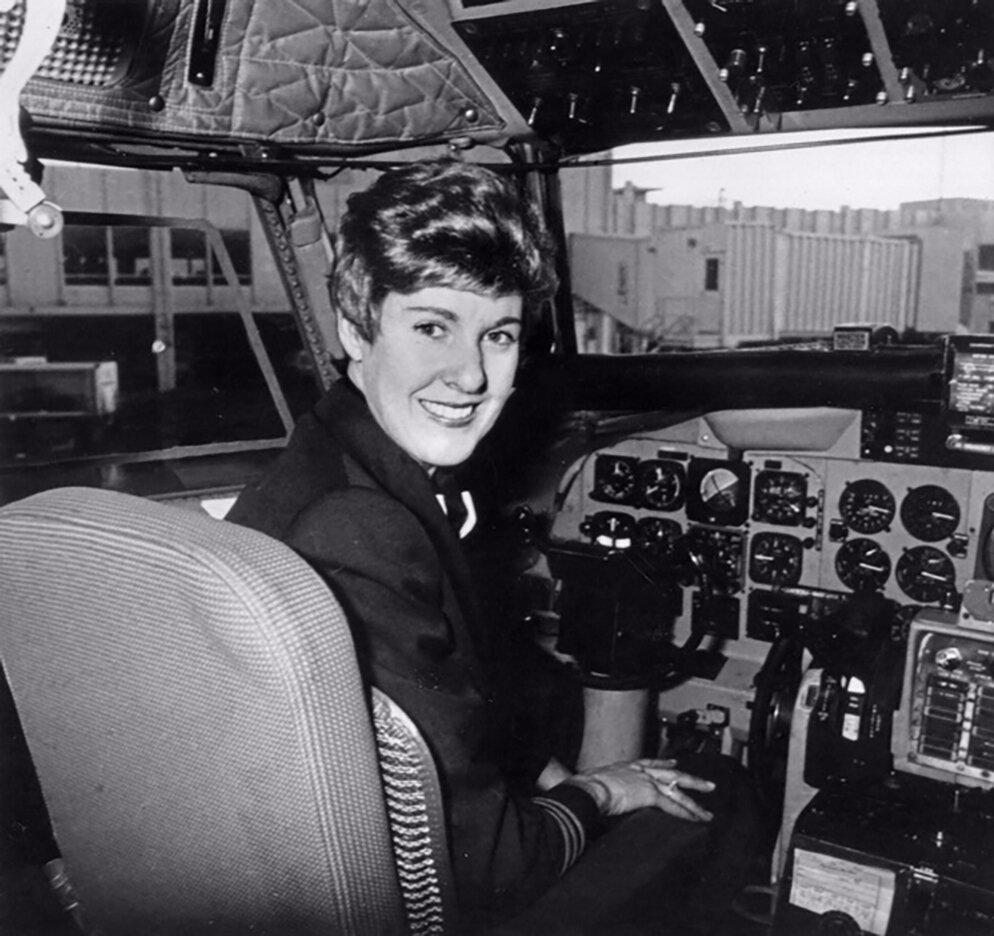
Emily Howell-Warner is a true badass of commercial aviation.
4. Emily Howell-Warner
Next on our list of important important women in aviation is Emily Howell-Warner. When Emily Howell-Warner was hired by Frontier Airlines in 1973, there were no other women piloting commercial airplanes in the U.S. This sexist tidbit is especially egregious when you consider that the first American woman hired by a commercial airline was in fact Helen Richey—in 1934! That’s right, a whopping 38-year gap in between kicking out the first female pilot and accepting the second.
>>As a sidenote, the real first female pilot in commercial aviation was Marga Von Etzdorf, who was hired by Lufthansa in 1927 or 28 (there is some discrepancy). Incidentally, both Von Etzdorf and Richey died young and of tragic circumstances. Both women are worth reading more about for their inspiring lives and contributions to aviation history.
Warner attended flight school at the Clinton Aviation Academy, where she would later become flight school manager and chief pilot. She became the first woman appointed an FAA Pilot Examiner. Still, she struggled for years to land a job with an airline. While her male counterparts were being hired with 1,500-2,000 hours of flight time, Warner had 3,500 hours as a pilot and 7,000 as a flight instructor under her belt while rejection letters kept coming in.
Finally, in January of 1973 she was hired by Frontier. She became the first woman member of the Air Line Pilots Association, ALPA (The largest pilot union in the world) and in 1976 became the first female airline captain in the U.S. An achievement she’d been working towards for nearly 20 years.
Warner eventually left Frontier to fly for UPS and then retired to become an FAA Examiner, overseeing the Boeing 737 Program. She has received dozens of honors and awards including the Amelia Earhart Award for Outstanding Woman in Aviation and induction into the National Aviation Hall of Fame and the National Women’s Hall of Fame.
Emily Howell-Warner died in July of 2020 at 80 years old, but her impact on the commercial aviation industry will be forever felt. I can not imagine what it must have been like, being the only woman in a sea of men flying the line back then. But I am so grateful, on behalf of myself, my female-pilot coworkers, and women everywhere, that she stuck it out and made it look graceful.
These are just four of the many, many women who have helped shape aviation and women’s history. There are a million more, but I only had time and space for a select few. Please don’t be mad at me for leaving out some of the greats! I hope that you learned something new today and that you are as impressed and inspired as I was after reading about these badass women in aviation.
To my female pilots out there: I am cheering loudly for every single one of you making your dreams come true and making the boys club a thing of the past.
Happy weekend y’all, and Happy Women’s history month.


Did any of this surprise you? Who is your women-in-aviation Icon? Let me know in the comments section! I’m always down to read a good bio. And if there are other aviation-related topics you’d like me to cover, send them my way.
Until next time!
Sources & Cred:
Bee Falk’s 100th Birthday | National Air and Space Museum (si.edu)
Women in the U.S. Army | The United States Army
National Air and Space Museum | (si.edu)
Order of Fifinella & WASP, Inc. – Texas Woman’s University (twu.edu)
Bessie Coleman | National Women’s History Museum
Marie Marvingt | Women in Aviation International (wai.org)
No. 2504: Marie Marvingt (uh.edu)

